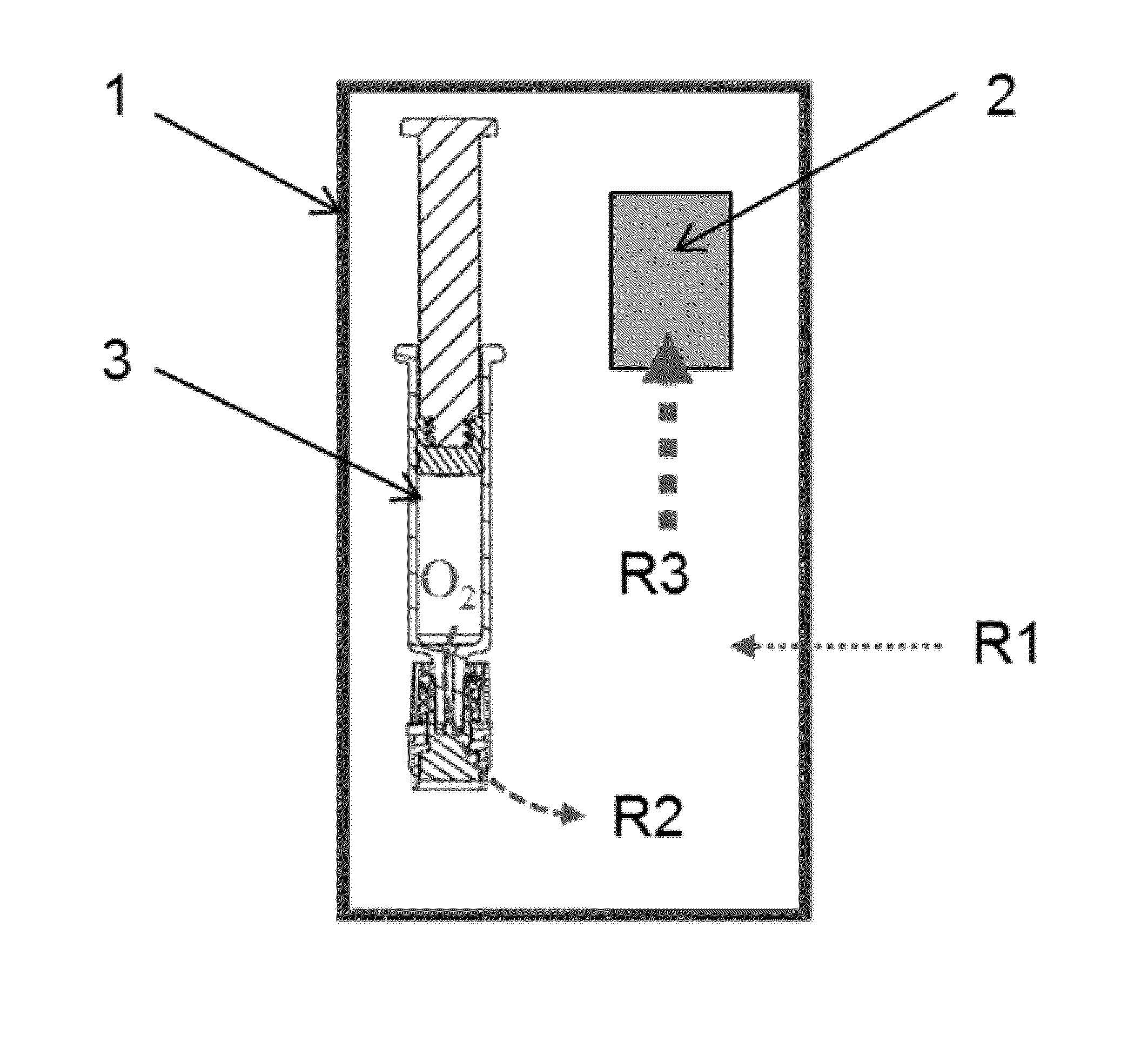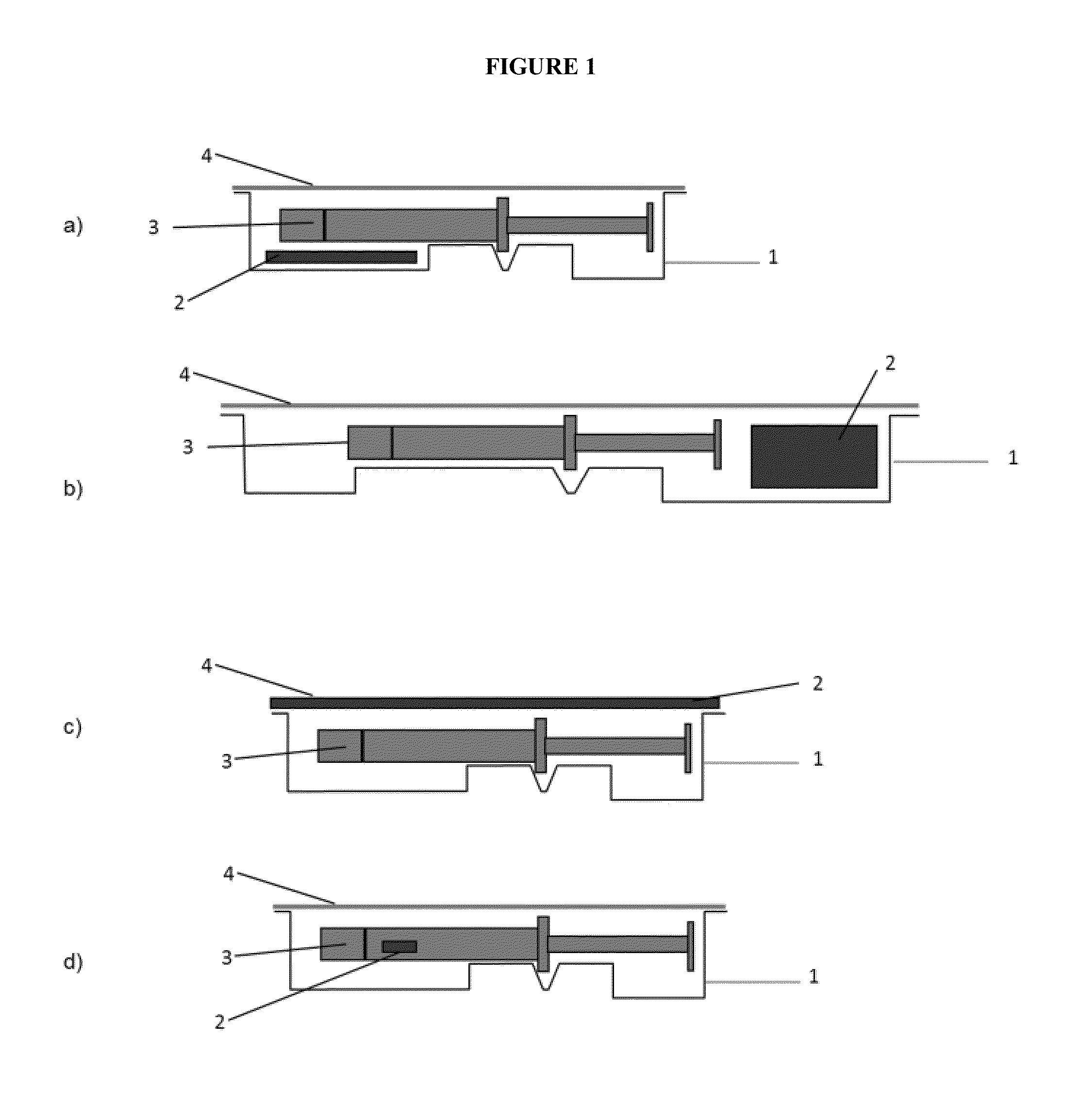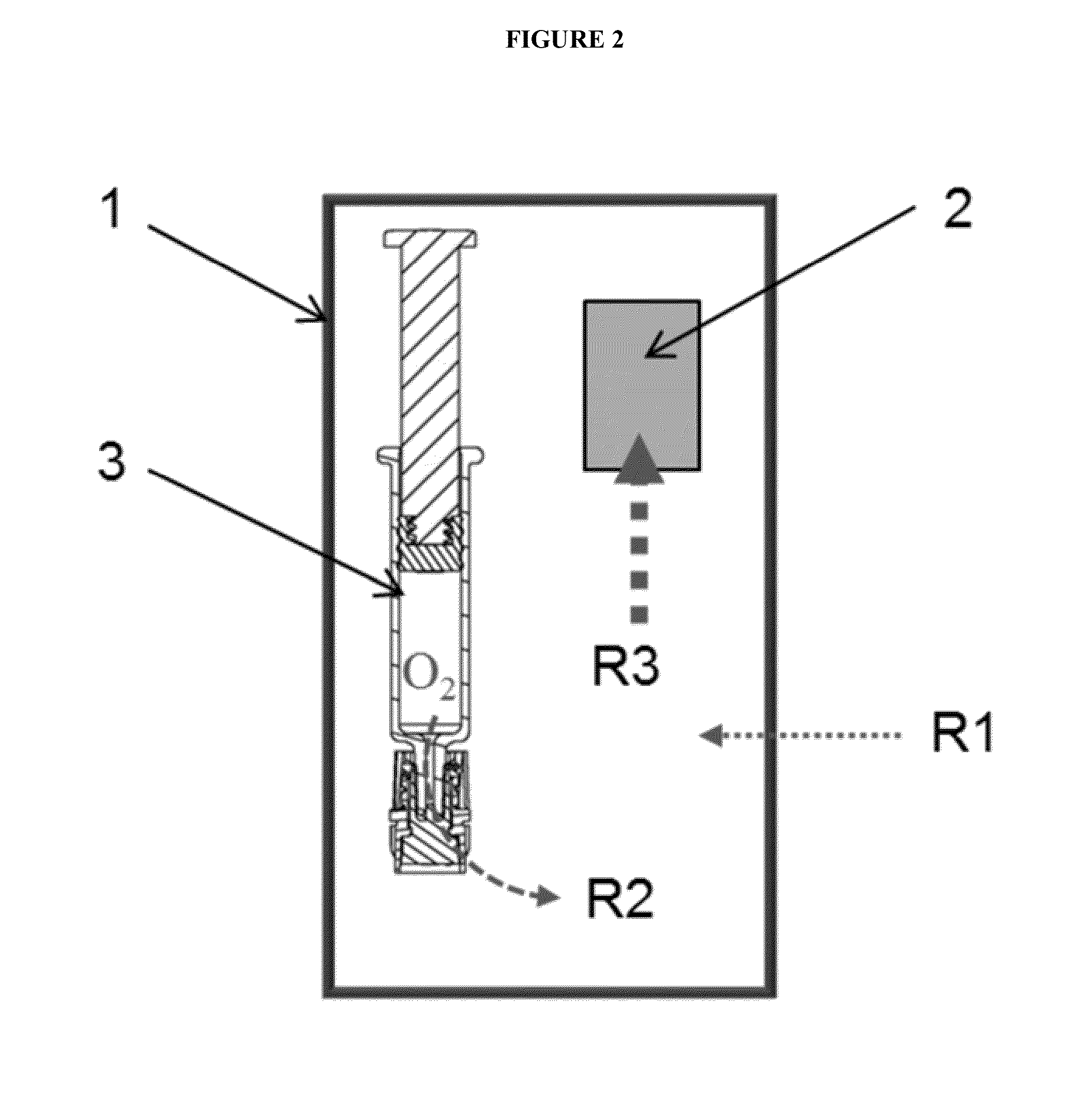Packaging system for oxygen-sensitive drugs
a technology of oxygen-sensitive drugs and packaging systems, applied in applications, transportation and packaging, rigid containers, etc., can solve the problems of reducing the oxygen level, adding complexity to the formulation and additional research, and limited efficiency of the process, so as to reduce the oxygen level
- Summary
- Abstract
- Description
- Claims
- Application Information
AI Technical Summary
Benefits of technology
Problems solved by technology
Method used
Image
Examples
example 1
Secondary Packaging Configurations and Analytical Equipment
[0077]Exemplary secondary packaging were developed and analyzed with respect to oxygen levels in the subsequent Examples 2 to 4. Different configurations allowed comparison of the materials' performance regarding oxygen barrier properties; oxygen absorber behavior and performance; and the kinetic and impact on the amount of oxygen inside the syringe. Furthermore, two systems were tested for oxygen removal in the secondary packaging: nitrogen flush before sealing the packaging or with use of an oxygen absorber.
[0078]Primary Packaging Container:
[0079]Degassed water was filled into 1.25 mL glass syringes (Hypak™, Becton Dickinson & Co.) with an oxygen permeable tip cap. An OxyDot® oxygen sensor (visual indicator of oxygen levels) was stuck inside the syringe barrel before the filling.
[0080]Secondary Packaging:
[0081]Materials for the secondary packaging included regular APET film which is without specific gas barrier properties;...
example 2
Oxygen Levels in Nitrogen Flushed Packaging Oxygen in Pouch Environments
[0087]The following table depicts the oxygen levels for Configurations A, C, D and O.
Oxygen % in ConfigurationDaysConfig014306090120150180210360A0.060.440.931.832.623.343.984.65.187.91C0.160.220.330.480.650.80.971.141.241.91D0.270.330.470.530.570.550.60.650.650.79O0.830.961.091.191.251.41.45
[0088]FIG. 4 is a graphical representation of the above table and depicts oxygen ingress in the nitrogen flushed pouches (Configurations A, C, D and O). Configurations A, C, D and O were all prepared with an aluminum foil top web. As the aluminum foil was very strong oxygen barrier properties, the top web impact on oxygen ingress is negligible. Thus, the graph allows essentially a direct comparison between the bottom web barrier properties.
[0089]At the beginning of the study (day=0) the oxygen levels in all configurations were about 0%, except for Configuration O with under 1%. Configuration A, comprised of the APET film with...
example 3
Oxygen Levels in Packaging with Oxygen Absorbers Oxygen in Pouch Environments
[0093]Configurations E, E bis, F and G were examined with respect to oxygen levels inside the pouch and syringe environments. The study allowed comparison with the different materials for the secondary packaging and oxygen absorber types. FIG. 7 shows the oxygen levels in the pouch environment at storage of 360 days at 25° C. / 60% RH. As described in Example 1, configurations E, E bis, F and G were sealed in ambient air environment at 21% oxygen. Offsets at t0 are attributed to the time between the sealing of the pouch and the oxygen level measurement. After 2 to 3 days, the pouch environment of all the configurations (E, E bis, F and G) were at zero % oxygen. This indicates that the oxygen absorber absorbs rapidly the initial oxygen content within the pouch. FIG. 8 depicts in rapid absorption in more detail at in an 8-day scale graph. After 1 year, it was observed that configurations E and F are still at ze...
PUM
 Login to View More
Login to View More Abstract
Description
Claims
Application Information
 Login to View More
Login to View More - R&D
- Intellectual Property
- Life Sciences
- Materials
- Tech Scout
- Unparalleled Data Quality
- Higher Quality Content
- 60% Fewer Hallucinations
Browse by: Latest US Patents, China's latest patents, Technical Efficacy Thesaurus, Application Domain, Technology Topic, Popular Technical Reports.
© 2025 PatSnap. All rights reserved.Legal|Privacy policy|Modern Slavery Act Transparency Statement|Sitemap|About US| Contact US: help@patsnap.com



